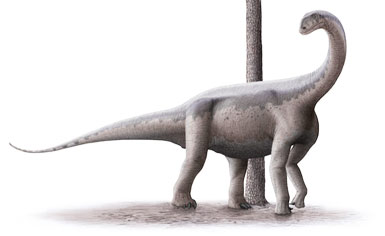The Jobaria dinosaurs comes under the saurapod category , they were believed to be primordial, the Jobaria's length is approximately 21.3 meters which is 70 ft and weighs 22.4 tons which is approximately 25 short tons. From the dinosaurs skeletons it can be seen that their backbone and their tail were uncomplicated where as the dinosaurs coming under the saurapod category known to be the Diplodocus and Apatosaurus had a complicated vertebrae and also whiplash tail from the North America which was very difficult to interpret.
The analysis of the ratios between the humerus and also the femur circumferences from the dinosaurs fossils to that of the existing elephants proved that the Jobaria's could lean back on its hind legs and could raise its front legs, this was proved by Paul Sereno. After the analysis of weight disturbution, it was proved that the Jobaria's entire weight was borne by the rear limbs but not by the forelimbs which is only for the elephants, due to this factor more than that of the elephants the Jobaria's can raise its front legs effortlessly.

The research in the year of 1997, in the places of Sahara desert for a duration of four months under the paleontologist Dr. Paul Sereno proved this place to be the biggest death spot of dinosaurs ever known in history containing an average percentage of 95% dinosaur skeletons which comes under the sauropod classification, the location of the fossils were found in the Tiourarén Formation of Niger.
Research in the place where the dinosaurs fossils were found proved that the period of origin was the Cretaceous Period known to between the Hauterivian and Barremian stages, thus proving the Jobaria dinosaurs existence to be 135 million years before. Also another research of these sediments from the originated area prove that these animals lived in the Bathonian to Oxfordian stages which is called to be the middle Jurassic age lying prior to the years ranging form164 and 161 million years .
| Jobaria facts: | ||||||||
|
||||||||